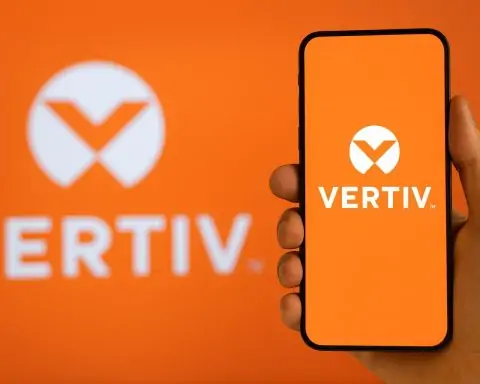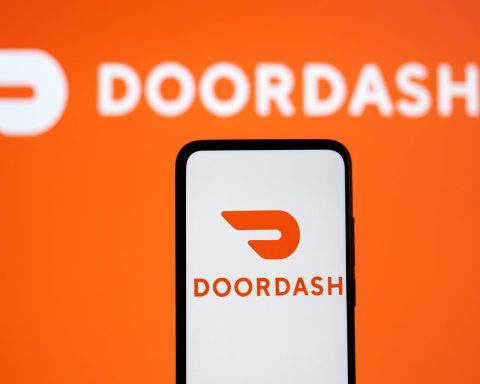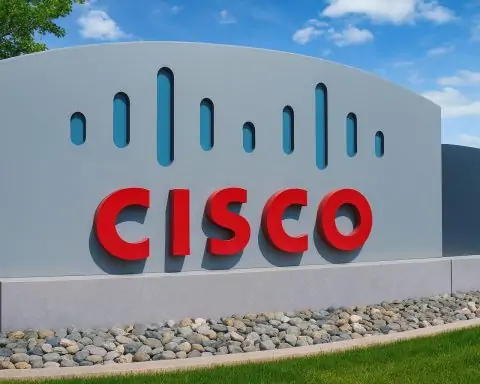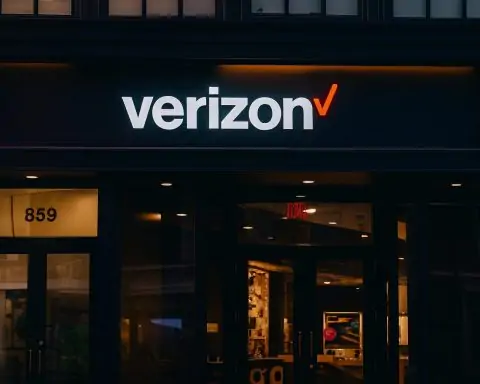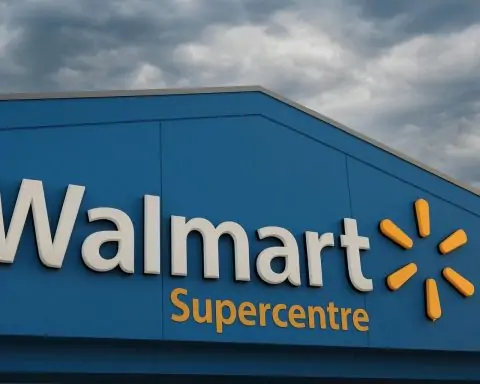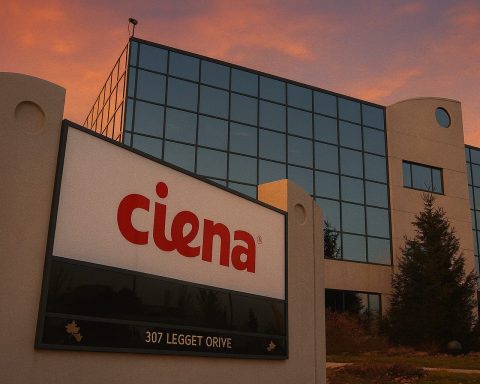- In 2008, Satoshi Nakamoto published the Bitcoin whitepaper, and in January 2009 Bitcoin’s genesis block was mined.
- The 2016 DAO hack on Ethereum triggered a hard fork.
- Vitalik Buterin proposed Ethereum in 2013, and the Ethereum Frontier network went live in July 2015, introducing smart contracts.
- By 2019, Walmart deployed a food traceability system using IBM Food Trust built on Hyperledger Fabric.
- Amazon launched Amazon Managed Blockchain on AWS in 2019.
- Ethereum’s Merge in 2022 switched from proof-of-work to proof-of-stake, reducing energy use by about 99.95%.
- Christie’s sold a digital NFT artwork for $69 million in 2021, highlighting mainstream NFT attention.
- By mid-2019, Ethereum was processing over 1 million transactions per day.
- By late 2021, DeFi applications had amassed over $200 billion in total value locked.
- As of 2023, more than 114 countries representing about 95% of global GDP were exploring central bank digital currencies (CBDCs), with around 11 countries having launched one.
Background and Technical Foundations
Blockchain is a decentralized, distributed digital ledger that securely records transactions across a network of computers without a central authority [1]. At its core, a blockchain consists of a chain of data blocks linked together using cryptography; each block contains a bundle of transactions and a hash (digital fingerprint) referencing the previous block, forming an immutable chain [2] [3]. This design ensures that once a block is added, its data cannot be altered without changing all subsequent blocks, providing immutability and tamper-resistance. Transactions are validated by network nodes and grouped into blocks, which are then confirmed by achieving distributed consensus – an agreement among the network on the block’s validity [4]. Common consensus mechanisms include Proof of Work (PoW), where nodes solve complex puzzles (as in Bitcoin), and Proof of Stake (PoS), where validators “stake” tokens for the right to add new blocks (as used in modern Ethereum) [5]. This consensus-driven validation, combined with cryptographic security, allows blockchains to replace the need for a trusted third-party with mathematical proof and distributed agreement on “truth” [6] [7].
Key Components: In a blockchain network, nodes (computers) maintain copies of the ledger and participate in validation [8]. Each node sees all transactions, fostering transparency, while the distributed nature (many nodes) provides decentralization, eliminating single points of failure [9]. Transactions are cryptographically signed by users (using private/public key pairs) to ensure authenticity and security. When transactions are broadcast, nodes verify them and, via the consensus algorithm, agree on which transactions to confirm and append. Confirmed transactions are grouped into a block with a timestamp and the previous block’s hash, then appended to the chain [10] – hence the term blockchain. This structure yields a shared ledger where all participants have a consistent view of data that is extremely difficult to falsify or tamper with [11]. Additional supporting elements often include smart contracts (programmable self-executing agreements stored on the chain) and cryptographic tokens or cryptocurrency incentives for network participants [12] [13].
Public vs. Private Blockchains: There are different types of blockchains tailored to use case needs. Public (permissionless) blockchains (like Bitcoin and Ethereum) are open networks that anyone can join and read or write transactions. They are fully decentralized with no single owner; security is maintained by consensus rules and economic incentives (e.g. mining rewards). Data on public chains is transparent and highly secure – once validated on-chain, records cannot be easily altered [14] [15]. In public blockchains, participants are typically pseudonymous, and no central entity controls the network. Private (permissioned) blockchains, by contrast, restrict participation to known, authorized members (often within a company or consortium). A private blockchain is usually operated by one or a few entities (more centralized control), which manage network membership and governance [16]. These permissioned networks trade some decentralization for privacy, speed, and efficiency – data and transaction details might only be visible to permissioned participants, making them suitable for enterprise use where data confidentiality is important [17] [18]. In general, private blockchains can achieve higher throughput (transactions per second) and lower latency since they involve fewer nodes and often use simpler consensus protocols (or even a trusted intermediary for ordering transactions) [19] [20]. There are also consortium or hybrid blockchains, where multiple organizations operate a shared permissioned ledger – these aim to combine the trust of blockchain with controlled access (e.g. Hyperledger Fabric and R3 Corda are frameworks enabling such consortium chains). Each type has its place: public chains excel at open ecosystems and censorship-resistance, while private/consortium chains are popular in enterprise settings that require privacy, compliance, or specific performance guarantees.
(Figure: Schematic of how blockchain transactions are grouped into blocks, secured by hashes, and validated by a distributed network – ensuring a tamper-proof ledger.)
Blockchain’s consensus mechanisms and cryptographic design solve the longstanding issue of trust in digital transactions. In traditional systems, a central authority (like a bank) is needed to prevent double-spending and ensure everyone has the same transaction history. Blockchains achieve this trust algorithmically: nodes collectively verify transactions and reach agreement, so participants can trust the ledger’s integrity without trusting any single intermediary. As blockchain advocate Andreas Antonopoulos puts it, “gradually, decentralized trust will be accepted as a new and effective trust model” for transactions, much as the internet enabled new models of information exchange [21]. In summary, a blockchain network provides a foundation where data integrity, transparency, and security are built in, enabling unforgeable transaction histories and new forms of decentralized collaboration.
History and Evolution
Blockchain technology emerged from the confluence of decades of research in cryptography, distributed systems, and digital currency. Below is a timeline of major milestones in the evolution of blockchain:
- 1991: Researchers Stuart Haber and W. Scott Stornetta introduced the concept of a cryptographically secured chain of data as a way to timestamp digital documents and ensure they could not be backdated or tampered with [22]. They described linking records in a chain of hashes, laying the conceptual groundwork for what would later be called blockchain. In 1992, they incorporated Merkle trees (hash trees) into the design to aggregate multiple documents into one block, further enhancing efficiency [23].
- 1998–2004: Several pioneers proposed digital money systems that hinted at elements of blockchain. Computer scientists like Nick Szabo (with “Bit Gold”) and Wei Dai (“b-money”) envisioned decentralized currency. In 2000, Stefan Konst published theories on cryptographic secured chains [24]. In 2004, Hal Finney introduced Reusable Proof of Work (RPoW), a mechanism for reusable digital tokens using PoW – an idea that directly influenced later cryptocurrency designs [25].
- 2008: The modern blockchain breakthrough came with Satoshi Nakamoto’s whitepaper “Bitcoin: A Peer-to-Peer Electronic Cash System.” Nakamoto combined prior innovations (cryptographic chains, distributed networks, proof-of-work consensus) to propose Bitcoin, the first decentralized cryptocurrency built on a blockchain [26]. The Bitcoin design introduced a public, append-only ledger (the blockchain) to record all transactions, secured by miners solving PoW puzzles. This solved the “double-spending” problem without any central authority, a landmark achievement in digital trust.
- 2009:Bitcoin’s network launch. In January 2009, Bitcoin’s genesis block was mined, marking the first real-world blockchain deployment [27]. The first Bitcoin transaction soon followed (Satoshi sent 10 BTC to Hal Finney) [28]. Bitcoin’s early years demonstrated that a blockchain-based currency could function securely at scale. Though initially worth virtually nothing, Bitcoin gained users and value over time, proving the viability of blockchain as a decentralized ledger for digital money. By eliminating intermediaries and leveraging consensus, Bitcoin showed that strangers globally could agree on a single source of truth (the blockchain) for transactions.
- 2013–2015:Evolution to Blockchain 2.0. As Bitcoin grew, technologists began to see broader potential for blockchain beyond cryptocurrency. In late 2013, Vitalik Buterin proposed Ethereum – a blockchain designed not just for currency, but for decentralized applications. Ethereum’s whitepaper (2013) and subsequent launch in 2015 introduced the concept of smart contracts – programs that run on the blockchain and execute automatically when conditions are met [29] [30]. The Ethereum Frontier network went live in July 2015, enabling developers worldwide to write smart contracts in Solidity and deploy dApps (decentralized applications). This was a turning point often dubbed Blockchain 2.0, as the focus expanded from digital cash to general-purpose computation on blockchain. 2015 also saw major moves in enterprise blockchain: the Linux Foundation launched the Hyperledger project to develop open-source blockchain frameworks, and a coalition of banks formed the R3 Corda consortium to explore blockchain in finance [31]. These initiatives marked the rise of enterprise blockchain platforms, separating the technology’s identity from just Bitcoin and opening the door to industry-specific distributed ledgers.
- 2016–2017:Expansion and hype. The term “blockchain” itself entered the mainstream, and startups and enterprises raced to pilot the technology. In 2016, major events included the first high-profile smart contract failure (the DAO hack on Ethereum), which led to a contentious hard fork of Ethereum’s blockchain [32]. By 2017, enthusiasm was soaring: Bitcoin’s price hit record highs (approaching $20k) and initial coin offerings (ICOs) proliferated as new projects used Ethereum to raise capital. Governments and regulators took notice – for example, Japan in 2017 officially recognized Bitcoin as legal tender [33]. New blockchain networks launched, such as EOS (aiming for high performance dApps) [34]. A Deloitte survey in 2017 found 15% of global banks were already using or experimenting with blockchain technology [35]. This period solidified that blockchain was more than a fad: it spurred a wave of innovation (and speculation), comparable in buzz to the early internet boom.
- 2018–2019:Reassessment and building. After the 2017 hype, the cryptocurrency market cooled in 2018 (Bitcoin’s value fell sharply). Tech giants and governments, however, continued investing in blockchain. In 2018, Facebook, Google, and Twitter banned crypto ads amid regulatory concerns [36], but behind the scenes, development continued. The European Commission launched the Blockchain Observatory and Forum to support blockchain innovation in Europe [37]. By 2019, enterprise adoption picked up pace: for example, Walmart deployed a food traceability system using Hyperledger Fabric to track produce supply chains, improving safety and transparency [38]. Amazon introduced Amazon Managed Blockchain on AWS, offering blockchain-as-a-service to businesses [39]. Meanwhile, Ethereum’s network activity grew — by mid-2019, Ethereum was processing over 1 million transactions per day [40], reflecting heavy use from dApps and token transfers.
- 2020–2022:Maturation and integration. A pivotal development in late 2020 was the launch of Ethereum 2.0’s Beacon Chain, beginning the network’s transition from PoW to PoS for better scalability [41]. Stablecoins (cryptocurrencies pegged to assets like USD) surged in use around 2020, offering less volatility; they became critical for trading and payments, foreshadowing blockchain’s integration with traditional finance [42]. By 2021, blockchain had firmly entered the public consciousness: Bitcoin hit an all-time price near $69k, major companies (Tesla, MicroStrategy) added crypto to their balance sheets, and the explosion of DeFi (decentralized finance) and NFTs demonstrated new blockchain use cases (the NFT art market hit mainstream news when a digital artwork sold for $69M at Christie’s in 2021) [43] [44]. The global blockchain market was valued at only ~$6 billion in 2021, but was projected to grow to over $1 trillion by 2030, illustrating the massive expectations ahead [45]. In 2022, a marquee moment was Ethereum’s Merge – the successful switch of Ethereum’s consensus mechanism from proof-of-work to proof-of-stake, reducing the network’s energy consumption by ~99.95% [46] and setting the stage for future scalability upgrades. This era also saw many governments and central banks actively researching or launching CBDCs (Central Bank Digital Currencies) using blockchain-inspired technology, as discussed later.
In summary, blockchain technology has evolved from a niche proposal in 2008 to a widespread platform for innovation by the mid-2020s. What began with Bitcoin’s blockchain 1.0 (digital currency) expanded with Ethereum’s blockchain 2.0 (smart contracts and dApps), followed by enterprise and consortium blockchains aiming to transform business processes (sometimes called blockchain 3.0). Each stage brought broader adoption and technical refinement. The technology’s history is marked by rapid growth, periodic hype and corrections, and continuous improvement in scalability, security, and functionality. Today, blockchains underpin a diverse range of applications well beyond cryptocurrency – from supply chain management to digital identity – reflecting an evolution from a single use case to a foundational digital infrastructure.
Market Trends and Use Cases
Blockchain has transitioned from an experimental technology to an increasingly integral part of many industries. Current market trends show accelerating global adoption, with innovative use cases emerging in finance, supply chains, healthcare, gaming, government services, and more. Below we analyze key sectors and the top blockchain networks driving usage in 2025:
- Financial Services and DeFi: Blockchain’s first and most prominent impact is in finance. Cryptocurrencies like Bitcoin are used as stores of value and for peer-to-peer payments, but even more transformative is the rise of decentralized finance (DeFi) on smart contract platforms like Ethereum. DeFi protocols enable lending, borrowing, trading, and yield-earning without traditional banks. By late 2021, DeFi applications had amassed over $200 billion in total value locked (capital in smart contracts), a 600% increase from the year prior [47]. Although the crypto market has fluctuated, DeFi continues to grow in sophistication, providing services like automated market maker exchanges (e.g. Uniswap) and crypto-collateralized loans to millions worldwide. Another major trend is the widespread use of stablecoins – cryptocurrencies pegged to fiat currencies (mostly USD). Stablecoins have become one of blockchain’s “killer apps,” enabling fast, cheap global payments and remittances [48]. In fact, in Q2 2024, stablecoins facilitated $8.5 trillion in transaction volume across 1.1 billion transactions, more than double the volume processed by Visa ($3.9T) in the same period [49]. This astonishing usage underscores that digital dollars on blockchain are being used for everyday commerce, cross-border transfers, and as a safe harbor in volatile markets. Stablecoins now account for ~32% of daily active addresses on blockchains (by far the largest use after DeFi at 34%) [50], indicating significant real-world adoption beyond trading. Traditional banks and fintech firms are also leveraging blockchain for settlement and interbank payments – for example, JPMorgan’s Onyx platform uses a private blockchain for instant wholesale payments, and dozens of central banks are experimenting with CBDCs to modernize monetary systems. Overall, in finance, blockchain is streamlining payments and reducing dependence on intermediaries, while unlocking new models like decentralized exchanges and tokenized assets. It is telling that global investment companies are exploring blockchain-based assets (e.g. BlackRock’s proposed Bitcoin ETF), and 83% of financial services executives surveyed by Deloitte viewed blockchain as a strategic priority as early as 2020 [51].
- Supply Chain and Logistics: Blockchain is tackling longstanding challenges in supply chain management by introducing greater transparency, traceability, and efficiency. In complex supply chains, multiple parties (manufacturers, suppliers, shippers, retailers) need to share data but often mistrust or lack coordination. Blockchain’s shared ledger provides a “single source of truth” about goods in transit, provenance, certifications, and handoffs, which all parties can trust. A notable example is IBM Food Trust, a blockchain-based tracking system used by companies like Walmart to monitor food from farm to store. By recording each step (harvest, processing, transport, etc.) on a blockchain, IBM Food Trust dramatically reduces the time needed to trace contamination sources – from days or weeks down to mere seconds [52] [53]. This improves food safety and accountability. Similarly, shipping giant Maersk (with IBM) piloted TradeLens, a blockchain to digitize global trade documentation and tracking, reducing paperwork and delays (though it faced adoption hurdles). Provenance tracking for luxury goods, raw materials, and pharmaceuticals has also seen success: for instance, Everledger uses blockchain to track diamonds and verify their ethical sourcing, and the MediLedger network allows pharmaceutical companies to authenticate drugs (helping fight counterfeits) using a permissioned blockchain. Traceability is a key selling point – blockchain records can detail a product’s journey, which is invaluable for recalls, audits, and sustainability claims. Beyond traceability, blockchain can streamline supply chain finance: by having an immutable record of transactions and orders, companies can more easily secure financing or insurance (banks can trust the on-chain data). In 2017, a consortium of European banks created a trade finance platform (we.trade) on blockchain to facilitate open account trading and automate invoice settlement [54]. The transparency and efficiency gains are significant – IBM’s ex-CEO Ginni Rometty famously said “anything that can be conceived of as a supply chain, blockchain can vastly improve its efficiency” by removing frictions and enabling trust among participants [55]. Today, many logistics and retail firms have moved from pilots to production deployments of blockchain for inventory tracking, origin verification, and vendor coordination. The trend is towards consortium blockchains in supply chain (often built on platforms like Hyperledger Fabric) that connect stakeholders and reduce fraud, errors, and administrative costs.
- Healthcare and Public Sector: The healthcare industry is exploring blockchain for secure data sharing and improved patient outcomes. Healthcare data management is notoriously siloed and vulnerable, but blockchain offers a way to give patients and providers a single, tamper-proof history of medical records, prescriptions, and treatments. Several hospitals and tech firms have trialed blockchain for electronic health records (EHRs) to enable patient-controlled sharing of data with privacy. For example, Estonia’s national health system uses a blockchain-like infrastructure (Keyless Signature Infrastructure) to secure millions of health records, ensuring data integrity and allowing audits of who accessed information. Blockchain is also being used to fight counterfeit drugs: the MediLedger network (a consortium including pharma companies and wholesalers) uses blockchain to verify drug supply chains and comply with DSCSA regulations, ensuring medicines can be traced to legitimate sources. More broadly, a 2023 analysis noted thousands of publications and projects on blockchain in healthcare, reflecting growing global interest [56]. Key use cases include patient identity management, clinical trial data sharing, insurance billing (to detect fraud), and vaccine distribution tracking (as seen during COVID-19). Security is a driving factor: healthcare data breaches are costly and common, and experts note blockchain’s ability to bolster data integrity. By using cryptographic techniques and decentralization, “blockchain-powered data storage can enhance the privacy and integrity of medical data”, helping minimize unauthorized access and tampering in healthcare records [57]. Governments and the broader public sector have likewise been tapping blockchain. For instance, digital identity initiatives using blockchain are underway in countries like Canada and Sierra Leone (for secure ID and credential verification). Voting systems based on blockchain have been piloted in places such as West Virginia (for military absentee voting) and in municipal elections in Switzerland, aiming to create tamper-proof, transparent election records – though concerns about security and anonymity persist. Land registries represent another promising area: Georgia, Honduras, and Sweden are among countries that tested blockchain to record property titles, hoping to increase trust and reduce fraud in land ownership records. Even public assistance and aid can leverage blockchain; the United Nations has used Ethereum-based tokens to distribute humanitarian aid to refugees with the World Food Programme’s Building Blocks project, ensuring funds are delivered transparently. Overall, in public services, blockchain is viewed as a tool to increase trust in government processes, reduce corruption (by making records immutable and auditable), and improve administrative efficiency by automating verification of documents and licenses.
- Gaming and Digital Entertainment: The gaming industry has embraced blockchain through the advent of NFTs (non-fungible tokens) and play-to-earn models. Blockchain enables provable ownership of digital items (characters, skins, cards, etc.), meaning gamers can truly own, trade, or sell their in-game assets outside of the game’s confines. This is a radical shift from traditional games where all assets are ultimately controlled by the publisher. Games like Axie Infinity popularized “play-to-earn” in 2021, where players earn crypto tokens by playing, effectively turning gaming into an income opportunity in some developing countries. Major game studios are now exploring NFTs for items and using blockchain marketplaces for player-to-player trading. By 2024, blockchain adoption in gaming (for asset management) was expected to grow by 45% year-over-year [58]. Beyond games, digital art and media have been revolutionized by NFTs on blockchain platforms like Ethereum, Flow, and Solana. Artists, musicians, and creators can sell unique cryptographic tokens representing their work (as seen in the 2021 NFT art boom). These trends indicate a broader Web3 creator economy where blockchain underpins ownership and monetization of digital content. Additionally, new entertainment experiences are emerging: for example, NFT-based collectible card games, metaverse platforms (decentralized virtual worlds like Decentraland or The Sandbox), and fan tokens for sports teams all use blockchain to confer verifiable ownership and governance rights to fans. The gaming sector is also driving technical innovation – demand for fast, low-cost transactions from game players has spurred adoption of high-throughput blockchains (like Solana) and Layer-2 networks to handle microtransactions at scale. In summary, blockchain is empowering users in digital worlds, enabling assets to have real-world value and portability, and fostering communities where players have a stake in the game’s economy. This is blurring the line between virtual and real economies and is a key component of the envisioned metaverse and next-generation online experiences.
- Top Blockchain Networks and Protocols: A handful of blockchain networks dominate usage today, each with different strengths and communities. Bitcoin remains the largest cryptocurrency network (market capitalization and recognition) and is heavily used for value storage and transfers – it processes about ~350,000 transactions per day and has a robust ecosystem (Lightning Network for fast off-chain payments, etc.). Ethereum, however, leads in terms of active utilization due to its smart contract functionality; it hosts thousands of dApps and handles roughly 1 million transactions per day, spanning finance, gaming, NFTs, and more. By 2024, Ethereum’s switch to PoS and the emergence of Layer-2 rollup networks have greatly increased its capacity and lowered fees, reinforcing its position as the “world computer” for decentralized applications. Other major public chains by usage include Binance Smart Chain (BSC), which offers Ethereum-compatible smart contracts with lower fees (BSC has seen wide use in DeFi and gaming, often surpassing Ethereum in daily transaction count), and Tron, notable for high volumes of stablecoin transactions (Tron is popular for USDT transfers). Solana has surged in popularity as well – known for its high throughput (thousands of TPS) and low latency, it accounted for an eye-opening ~100 million active addresses in a recent month (thanks to popular apps and possibly some airdrop-related activity) [59]. In fact, as of late 2024, monthly active crypto addresses hit an all-time high (~220 million), with Solana, NEAR, Coinbase’s Layer-2 Base, Tron, and Bitcoin leading the count, and Ethereum and BNB Chain also each serving millions of active addresses [60]. This shows that activity is spreading across many networks, each carving out niches: e.g. Polygon (a Layer-2/Ethereum sidechain) is big in NFTs and gaming collaborations, Avalanche focuses on speed and has multiple subnets for enterprise, and Polkadot and Cosmos concentrate on interoperability (connecting multiple blockchains together). On the enterprise side, Hyperledger Fabric and Quorum are among the top platforms. Hyperledger Fabric, backed by IBM and the Linux Foundation, is widely used in private consortia – from food supply chains to trade finance – because of its modular architecture and permissioned model [61] [62]. R3 Corda is another popular distributed ledger platform in banking and insurance, enabling direct ledger updates between trusted parties with strong privacy controls. These enterprise-grade blockchains typically do not have a cryptocurrency but instead focus on shared databases and automation via smart contracts in a closed network. It’s worth noting that innovation is robust: new protocols keep emerging (for example, Aptos and Sui introduced in 2022-23 with novel smart contract languages and parallel execution for high performance). Interoperability protocols like Cosmos (IBC protocol) and Polkadot are enabling cross-chain communication, so value and data can move between different blockchains – a crucial development as the ecosystem matures into a “network of networks.” In terms of usage and developer interest, Ethereum still leads in developer community size and “builder energy,” attracting about 21% of Web3 developers (the largest share) [63]. It’s followed by growing interest in Solana, Base, and various Layer-2 networks which are quickly expanding. This healthy multi-chain landscape suggests a future where many specialized blockchains interoperate, rather than a single chain dominating all use cases.
In summary, global blockchain adoption trends are very encouraging. We see deepening penetration in finance (from retail crypto trading to institutional settlement), pioneering solutions in supply chain and healthcare that solve real inefficiencies, explosive growth in new digital asset classes like NFTs for gaming and art, and serious exploration by the public sector to leverage blockchain’s trust guarantees. User metrics reinforce this story: the number of active blockchain users and transactions continues to climb to record levels [64], even as the technology itself becomes more scalable and user-friendly. A Deloitte study noted that over one-third of organizations had blockchain in production by 2020 and the majority considered it a top-five strategic priority [65] – those numbers have only grown since. As industries increasingly recognize blockchain’s ability to create tamper-proof, shared data infrastructures, they are incorporating it into their digital transformation roadmaps. From cutting transaction costs to enabling new business models, blockchain is driving a wave of innovation that is reshaping how we exchange value and information across the economy.
Forecasts and Future Potential
As blockchain technology heads toward the latter half of the decade, experts forecast substantial growth in its economic impact, continued technical advances (especially in scalability and interoperability), and a gradually clarifying regulatory environment. Here we outline the anticipated future trajectory of blockchain:
Market Growth and Economic Impact: Nearly all analysts agree the blockchain market is poised for explosive expansion. Estimates do vary, but they are uniformly bullish. For example, Statista projects the global blockchain technology market to grow from just ~$6 billion in 2021 to over $1 trillion by 2030, reflecting a compound annual growth rate (CAGR) well above 50% [66]. Some research firms are even more optimistic: Grand View Research estimates the market will reach $1.43 trillion by 2030, and MarketsandMarkets expects ~$250 billion by 2029 (from ~$20B in 2024) – different numbers, but all imply an order-of-magnitude growth as blockchain moves from pilot projects to core infrastructure. A famous prediction by Gartner posits that “blockchain will generate $3.1 trillion in new business value by 2030,” meaning the technology’s adoption could drive massive efficiency gains and new business models across industries [67]. Even if such figures are taken with caution, the direction is clear: blockchain’s role in the global economy is set to dramatically increase. By 2030, it’s expected that blockchain and related technologies (like cryptocurrencies, tokenization, smart contracts) will be mainstream components of financial systems, supply chains, and digital services. The World Economic Forum earlier predicted that by 2027, 10% of the world’s GDP could be stored on blockchain networks – and we’re already seeing signs of that with the rise of tokenized deposits, securities, and Central Bank Digital Currencies in development.
Scaling Solutions (Layer 2 and Beyond): A major focus for the future is improving blockchain scalability – handling many more transactions per second – without sacrificing security or decentralization. Progress on this front is well underway. Layer 2 scaling solutions have rolled out on major platforms: for Bitcoin, the Lightning Network enables instant micropayments by settling transactions off-chain (and only occasionally anchoring to the main chain), greatly increasing throughput for everyday payments. For Ethereum and other smart contract chains, a variety of Layer-2 networks (Optimistic Rollups like Arbitrum and Optimism, ZK-Rollups like StarkNet and zkSync, sidechains like Polygon) are coming of age. These work by processing transactions off the main chain and periodically posting compressed proofs back to it, thereby reducing on-chain load by orders of magnitude. Already, these solutions have drastically reduced transaction costs – for example, sending a stablecoin on an Ethereum Layer-2 like Base costs a few cents in fees, versus a few dollars on the Layer-1 a couple years ago [68]. According to a16z’s analysis, blockchains in 2024 are processing 50× more transactions per second than they were just four years prior, thanks largely to Layer-2 scaling and also the advent of new high-performance Layer-1s [69]. Looking ahead, Ethereum’s roadmap (post-Merge) includes sharding – splitting the blockchain into multiple “shards” to parallelize processing – which could further increase capacity. We also see emerging research into alternative architectures like DAG-based ledgers (directed acyclic graphs used by projects like IOTA and Hedera Hashgraph) to handle high throughput. By 2025 and beyond, it’s expected that users will interact with blockchain applications with near-instant confirmations and negligible fees, as the infrastructure becomes both faster and more user-friendly (potentially even abstracting away the blockchain complexity under the hood). These improvements are critical for blockchain to support mass-market applications (like social networks or gaming with millions of daily users) – and indeed, Gartner highlighted that Layer 2 scaling technologies are one of the recent breakthroughs driving blockchain towards mainstream adoption [70].
Interoperability and Network Convergence: In the future, we anticipate a more interconnected blockchain ecosystem. Currently, there are many separate blockchains (each with their own community and use cases), but they operate in silos with limited ability to communicate. Projects like Cosmos (with its Inter-Blockchain Communication protocol) and Polkadot (with its relay chain and parachains model) are spearheading interoperability, allowing assets and data to flow between chains in a secure manner. Gartner’s 2024 analysis identifies cross-chain interoperability as a transformational technology likely to gain traction in the next 2–5 years [71]. The rise of cross-chain bridges and standardized communication protocols will enable a user on one blockchain to seamlessly interact with services on another, unleashing network effects across the whole crypto landscape. For enterprises, this may mean private consortia networks can connect with public networks when needed (for instance, a supply chain blockchain could settle a token payment on a public chain or notarize data to Ethereum for extra security). The concept of the “Internet of Blockchains” is becoming more tangible – much like isolated early computer networks eventually converged into the singular Internet. We expect to see increasing composability across layer-1s and layer-2s, with users barely noticing which chain they’re on, as wallets and apps handle cross-chain transactions behind the scenes. In summary, interoperability and standards will be a key theme, preventing fragmentation and enabling blockchains to collectively support global-scale applications.
Emerging Use Cases and “Web3”: As the infrastructure matures, entirely new applications are likely to flourish. One such direction is the broader Web3 movement, which envisions a decentralized web where users control their data and identity, and communities govern platforms collectively (often via tokens). We are already seeing early signs: decentralized social media protocols (Lens, Farcaster), creator economies where artists tokenize their work and earn royalties automatically, and integration of blockchain with other frontier tech like AI and IoT. For instance, pairing IoT devices with blockchain ledgers can create trusted data marketplaces (devices publish data which is verified and monetized via blockchain), and blockchain-based decentralized autonomous organizations (DAOs) could govern networks of smart devices or AI services without centralized oversight. A16z’s 2024 report notes that crypto is intersecting with trends like AI and social networks, hinting that blockchain could help solve challenges such as data provenance for AI (tracking how AI models are trained or how data is used) [72]. In gaming, as mentioned, blockchain could underpin entire virtual worlds’ economies (metaverses), and that is expected to continue evolving. Another area to watch is real-world asset tokenization: bringing traditionally illiquid assets (real estate, commodities, even fine art) onto blockchains as digital tokens that can be easily traded and used as collateral. Big institutions like Schwab and Siemens have begun tokenizing parts of their portfolios or issuing bonds on blockchain, and this trend is forecasted to accelerate, potentially unlocking trillions in liquidity from real-world assets by representing them on-chain. Gartner, in fact, points to tokenization of real-world assets as an emerging use case currently in a hype phase, but likely to mature in a few years [73].
Regulatory Outlook: The regulatory environment for blockchain and crypto is gradually moving from uncertainty to clarity, though it varies greatly by jurisdiction. By 2025, we expect more defined frameworks to be in place. The European Union has led with the MiCA (Markets in Crypto-Assets) regulation, passed in 2023 and rolling out in 2024–25, which sets comprehensive rules for crypto asset issuance, stablecoins, and exchanges across EU member states. This will likely make Europe an attractive environment for blockchain businesses due to clearer rules of the road. In the United States, regulation has been more patchwork, but momentum is building: lawmakers have proposed bills to regulate stablecoin issuers like banks and to define oversight for crypto exchanges, and the SEC and CFTC are actively asserting jurisdiction over various crypto products. By late 2024 or 2025, we may see U.S. legislation that provides clearer definitions of tokens (commodity vs security) and establishes consumer protections for crypto trading, which could spur more institutional involvement. Many other countries (UK, Singapore, UAE, etc.) are also updating laws to balance innovation with risk mitigation (for example, licensing exchanges, setting anti-money-laundering standards, and clarifying tax treatment of crypto assets). Importantly, global coordination is increasing: bodies like the G20 and BIS are discussing international standards for crypto regulation and CBDC interoperability. On the topic of central bank digital currencies, there is a strong indication that they will proliferate: over 114 countries, representing ~95% of global GDP, are exploring or developing CBDCs, and about 11 countries have already fully launched one as of 2023 [74]. China’s digital yuan (e-CNY) pilot has millions of users, and other nations from Nigeria to Sweden are in advanced trials. While not all CBDCs use blockchain (some use other distributed ledger tech), many do incorporate similar principles of cryptographic transaction records. The rise of CBDCs suggests a future where blockchain-based or inspired digital cash coexists with (and perhaps gradually replaces) physical cash, potentially integrating with public blockchain networks for certain functions. Regulatory acceptance of blockchain is also evident in the way governments are directly supporting the tech (e.g. India launching a national blockchain infrastructure, Dubai aiming to put all government documents on blockchain). We anticipate a harmonization of standards eventually – akin to how the internet forced countries to adopt common protocols – where blockchain networks operating under clear legal frameworks can interconnect globally. Of course, challenges remain: regulators are concerned about investor protection, illicit activity, and financial stability (witness the fallout of unregulated crypto firms in 2022). So the balance of fostering innovation vs. ensuring safeguards will continue to shape the regulatory narrative. Nonetheless, the overall outlook is that regulation will legitimize and enable broader adoption of blockchain by establishing the rules for how digital assets and decentralized networks can operate openly within the law.
In conclusion, the future of blockchain technology looks extremely promising. We expect to see wider adoption across industries, where blockchain becomes a behind-the-scenes utility for securely managing data and value. Technological developments like robust Layer-2 networks, cross-chain interoperability, and improved privacy (via techniques like zero-knowledge proofs) will address current limitations and open new frontiers. The innovation pipeline is strong – for instance, researchers are working on more energy-efficient consensus algorithms, better oracle systems for real-world data input, and even quantum-resistant cryptographic methods to future-proof blockchains. Industry analysts often compare the current state of blockchain to the early internet in the 1990s: on the cusp of a breakthrough into ubiquity. Just as websites and e-commerce exploded in the 2000s with improved bandwidth and browsers, one can foresee a similar explosion of Web3 applications as blockchain tech becomes more scalable and user-centric. Expert forecasts reinforce this optimism – whether it’s huge market valuations by 2030 or qualitative visions of decentralized systems empowering individuals worldwide. Vitalik Buterin, Ethereum’s co-founder, has articulated that the true success of crypto will come “not because it empowers better people, but because it empowers better institutions” [75], hinting that the decentralized systems enabled by blockchain can fundamentally improve how we organize economic and social structures. Many believe we are moving toward a future where trust is established by code rather than intermediaries, and blockchains provide the foundational infrastructure for that paradigm. In summary, if the 2010s were about proving the concept of blockchains, the late 2020s will be about realizing their transformative potential at scale – delivering the benefits of transparency, security, and democratization of value to billions of people.
Expert Commentary and Quotes
To provide additional perspective, here are insights and predictions from leading experts in the blockchain space:
- Vitalik Buterin (Co-founder of Ethereum): Vitalik emphasizes the revolutionary goal of blockchain in reshaping societal institutions. He argues that the power of crypto lies in building systems that are fundamentally more trustworthy and fair. “If crypto succeeds, it’s not because it empowers better people. It’s because it empowers better institutions,” Buterin says, underscoring that decentralization can improve the rules and structures that govern our interactions [76]. On the disruptive potential of decentralization, he also remarked how blockchain shifts the paradigm of control: “Whereas most technologies tend to automate workers on the periphery doing menial tasks, blockchains automate away the center. Instead of putting the taxi driver out of a job, blockchain puts Uber out of a job and lets the taxi drivers work with the customer directly.” [77]. This quote vividly illustrates how blockchain can remove centralized intermediaries and empower peer-to-peer activity – whether in finance, ride sharing, or any platform economy – leading to what Buterin calls “real internet-based sovereignty” for users.
- Andreas M. Antonopoulos (Blockchain author and educator): A renowned Bitcoin expert, Antonopoulos often speaks about the paradigm shift in trust models. He points out that society has seen shifts like this before, especially with the internet, and blockchain is another such shift in the context of finance and governance. In his words, “Gradually, decentralized trust will be accepted as a new and effective trust model. We have seen this evolution of understanding before – on the Internet.” [78]. This insight highlights that initially people are skeptical of decentralized systems, but over time, just as we came to trust internet protocols (e.g. trusting packet routing without a central operator), we will come to trust blockchain’s decentralized consensus as a normal and reliable mechanism. Antonopoulos also famously described Bitcoin as “not just money for the Internet…Bitcoin is the internet of money”, conveying that blockchain-based currency is as revolutionary as email was to postal mail – it creates a global, open system for value exchange that anyone can participate in. His confidence in the irreversibility of this invention is summed up in his quip that you can’t put this genie back in the bottle: “You cannot uninvent this technology. You cannot turn this omelette back into eggs.” [79]. Together, his commentary reinforces the view that blockchain is here to stay and will gradually integrate into the fabric of our digital lives, changing how we trust and transact.
- Ginni Rometty (Former CEO of IBM): From an enterprise perspective, Ginni Rometty led one of the biggest corporate pushes into blockchain with IBM’s blockchain unit. She has articulated blockchain’s value for streamlining complex, multi-party processes. One of her noted quotes is: “Anything that can be conceived of as a supply chain, blockchain can vastly improve its efficiency – it doesn’t matter if it’s people, numbers, data, money.” [80]. This statement reflects the broad applicability that enterprise leaders see in blockchain: wherever multiple parties exchange assets or information, a shared ledger can reduce friction and increase trust. Rometty’s conviction came from early successful pilots in food safety, global shipping, and banking done by IBM, and her quote has often been cited to encourage businesses to re-engineer supply chains and workflows using blockchain to gain transparency and speed. It’s a strong endorsement from a top industry executive that blockchain isn’t just about cryptocurrencies, but about reinventing business processes across the board.
- Analysts and Industry Researchers (Deloitte and Gartner): Industry research firms have also weighed in with analyses and predictions. Deloitte’s annual blockchain surveys of executives consistently show a robust belief in blockchain’s potential. In 2020, for instance, 55% of senior executives surveyed by Deloitte said blockchain was a critical strategic priority, and a large chunk had already allocated budget to blockchain projects [81]. Deloitte has written that we are “headed to a blockchain winter’s end”, implying the experimentation phase is ending and real deployments are taking off, moving us toward a “blockchain spring” of production systems. Gartner analysts, known for the hype cycle, have been predicting that blockchain will become foundational to competitive advantage in many industries. As noted earlier, Gartner expects blockchain to add trillions of dollars of value to the economy by 2030 [82]. In 2024’s Hype Cycle report, Gartner highlighted recent advancements such as Layer-2 scaling, DeFi, NFTs, and interoperability as signs that blockchain is climbing out of the “trough of disillusionment” and into practical mainstream use [83] [84]. They foresee technologies like smart contracts, blockchain wallets, and stablecoins reaching mainstream adoption within 2 years, and classify blockchain as “transformational” in the long term for its ability to change industry dynamics [85] [86]. One Gartner distinguished VP, David Furlonger, famously compared the current state of blockchain to the early days of the motor car: cumbersome and sometimes unreliable, but a profound innovation – “Blockchain will be transformative across industries and society… but it will take many years of steady progress and integration before we realize its full promise,” he has advised in summary. The consensus from such experts is that patience and continued innovation will yield a future where blockchain is as ordinary in IT stacks as databases or cloud are today, and the winners will be organizations that proactively experiment and position themselves for that decentralized future.
These expert commentaries, spanning technologists, evangelists, corporate leaders, and researchers, all converge on a common theme: blockchain technology has far-reaching potential to reshape systems of value and trust. Whether the focus is enabling new peer-to-peer economies (Buterin, Antonopoulos) or improving existing industry workflows (Rometty, Deloitte), the message is that we are on the cusp of a paradigm shift. The next decade will be critical in translating this potential into reality, guided by the hard-earned wisdom of these experts and the continued collaboration of the global blockchain community.
Sources:
- GeeksforGeeks – “Components of Blockchain Network” (Oct 2024): Definition of blockchain and key features [87] [88].
- GeeksforGeeks – “Difference between Public and Private Blockchain” (May 2022): Characteristics of public vs private blockchains [89] [90].
- TechTarget – “A Timeline and History of Blockchain Technology” (2022): Timeline of blockchain evolution (1979–2022) [91] [92].
- GeeksforGeeks – “History of Blockchain” (May 2025): Key historical milestones from 1991 through Ethereum and enterprise blockchain rise [93] [94].
- TechTarget – “Top 8 Blockchain Platforms to Consider in 2025” (Jan 2025): Enterprise blockchain platforms and use cases (IBM Food Trust, etc.) [95] [96].
- a16z Crypto – “State of Crypto 2024” (Oct 2024): Data on active addresses, stablecoin volumes, and crypto usage trends [97] [98].
- Ledger Insights – “Gartner Hype Cycle 2024: Stablecoins to Go Mainstream” (Aug 2024): Gartner’s outlook on blockchain adoption timeline and key tech advancements [99] [100].
- World Economic Forum – “How blockchain can improve data security in healthcare” (Dec 2023): Benefits of blockchain for healthcare data integrity [101].
- CryptoAltruism – “15 Quotes about the Potential of Blockchain and Crypto” (Aug 2023): Quotes from Vitalik Buterin, Ginni Rometty, etc., on blockchain’s impact [102] [103].
- BrainyQuote – Andreas Antonopoulos Quote on decentralized trust and the internet [104].
- Investing.com – “114 countries are exploring CBDCs” (Jun 2023) via Atlantic Council data [105].
- TechTarget – “Blockchain Timeline / Business Applications” (2022): Stats on enterprise adoption and market size projections [106] [107].
References
1. www.geeksforgeeks.org, 2. www.geeksforgeeks.org, 3. www.geeksforgeeks.org, 4. www.geeksforgeeks.org, 5. www.geeksforgeeks.org, 6. www.cryptoaltruism.org, 7. www.brainyquote.com, 8. www.geeksforgeeks.org, 9. www.geeksforgeeks.org, 10. www.geeksforgeeks.org, 11. www.geeksforgeeks.org, 12. www.geeksforgeeks.org, 13. www.geeksforgeeks.org, 14. www.geeksforgeeks.org, 15. www.geeksforgeeks.org, 16. www.geeksforgeeks.org, 17. www.geeksforgeeks.org, 18. www.geeksforgeeks.org, 19. www.geeksforgeeks.org, 20. www.geeksforgeeks.org, 21. www.brainyquote.com, 22. www.techtarget.com, 23. www.geeksforgeeks.org, 24. www.geeksforgeeks.org, 25. www.geeksforgeeks.org, 26. www.techtarget.com, 27. www.techtarget.com, 28. www.techtarget.com, 29. www.techtarget.com, 30. www.techtarget.com, 31. www.techtarget.com, 32. www.geeksforgeeks.org, 33. www.geeksforgeeks.org, 34. www.geeksforgeeks.org, 35. www.techtarget.com, 36. www.techtarget.com, 37. www.techtarget.com, 38. www.techtarget.com, 39. www.techtarget.com, 40. www.techtarget.com, 41. www.techtarget.com, 42. www.techtarget.com, 43. www.techtarget.com, 44. www.techtarget.com, 45. www.techtarget.com, 46. www.techtarget.com, 47. www.techtarget.com, 48. a16zcrypto.com, 49. a16zcrypto.com, 50. a16zcrypto.com, 51. www.techtarget.com, 52. www.techtarget.com, 53. www.techtarget.com, 54. www.techtarget.com, 55. www.cryptoaltruism.org, 56. www.frontiersin.org, 57. www.weforum.org, 58. electroiq.com, 59. a16zcrypto.com, 60. a16zcrypto.com, 61. www.techtarget.com, 62. www.techtarget.com, 63. a16zcrypto.com, 64. a16zcrypto.com, 65. www.techtarget.com, 66. www.techtarget.com, 67. medium.com, 68. a16zcrypto.com, 69. a16zcrypto.com, 70. www.ledgerinsights.com, 71. www.ledgerinsights.com, 72. a16zcrypto.com, 73. www.ledgerinsights.com, 74. www.investing.com, 75. www.cryptoaltruism.org, 76. www.cryptoaltruism.org, 77. www.cryptoaltruism.org, 78. www.brainyquote.com, 79. www.goodreads.com, 80. www.cryptoaltruism.org, 81. www.techtarget.com, 82. medium.com, 83. www.ledgerinsights.com, 84. www.ledgerinsights.com, 85. www.ledgerinsights.com, 86. www.ledgerinsights.com, 87. www.geeksforgeeks.org, 88. www.geeksforgeeks.org, 89. www.geeksforgeeks.org, 90. www.geeksforgeeks.org, 91. www.techtarget.com, 92. www.techtarget.com, 93. www.geeksforgeeks.org, 94. www.geeksforgeeks.org, 95. www.techtarget.com, 96. www.techtarget.com, 97. a16zcrypto.com, 98. a16zcrypto.com, 99. www.ledgerinsights.com, 100. www.ledgerinsights.com, 101. www.weforum.org, 102. www.cryptoaltruism.org, 103. www.cryptoaltruism.org, 104. www.brainyquote.com, 105. www.investing.com, 106. www.techtarget.com, 107. www.techtarget.com


